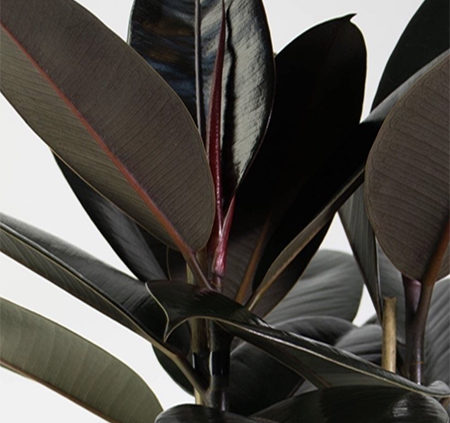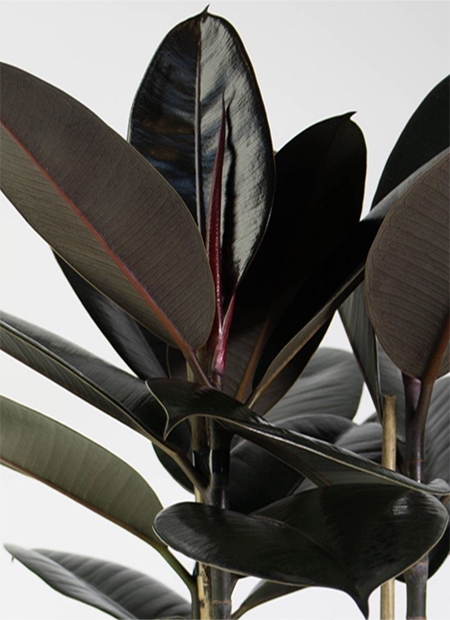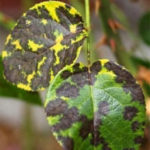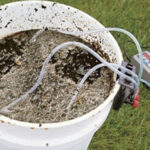
Rubber Tree Plant Potted Care
Know How To Care For Rubber Tree Plant
 The Rubber Tree plant is not only an attractive looking plant that you can grow indoors. Rubber Plants will also purify and clean air quality naturally inside your home just as much as the peace lily. This ornamental plant can grow up to a height of 30 metres long in its natural habitat. The plants that you can grow indoors will reach a manageable height of about 8 feet. The scientific name of the Rubber Tree plant is Ficus Elastic. It is also commonly known as the rubber bush, rubber fig or the Indian rubber bush. This plant is seen commonly in India, Bhutan, Nepal, Malaysia and Indonesia as well as Australia. The rubber plant belongs to the fig genus and the Moraceae family.
The Rubber Tree plant is not only an attractive looking plant that you can grow indoors. Rubber Plants will also purify and clean air quality naturally inside your home just as much as the peace lily. This ornamental plant can grow up to a height of 30 metres long in its natural habitat. The plants that you can grow indoors will reach a manageable height of about 8 feet. The scientific name of the Rubber Tree plant is Ficus Elastic. It is also commonly known as the rubber bush, rubber fig or the Indian rubber bush. This plant is seen commonly in India, Bhutan, Nepal, Malaysia and Indonesia as well as Australia. The rubber plant belongs to the fig genus and the Moraceae family.
Rubber Tree Plant Description
The Rubber Tree plant can grow into a larger tree and attain a height of about 30 to 40 metres. The tree has a solid trunk that is about 2 metres in diameter fully grown. The aerial roots that are developing from the trunk of the rubber plant will help in holding the huge tree in the soil. The branches of this tree are also very heavy. The leaves of the plant are very attractive and are broad, shiny and oval in shape. The leaf attains a size of 4 to 13 inches long and 2 to 6 inch width. The leaves of the Rubber Tree are developed inside a sheath and this will grow large in size as the leaf grows. Once it is mature, the leaf will unfurl and the sheath will shed off from the plant.
Growing Conditions for the Rubber Tree House Plant
- The rubber plants prefer to grow in bright light, but do not like to be exposed to the hot sun for long hours. They should be kept away from heat sources.
- The plant needs to be kept in moist soil during the summer and the spring season. The soil must be on the drier side during the winter season.
- The plant does not need a lot of care and will grow on its own. Fertilising the plant during early summer and during spring will help the rubber plant to develop larger leaves.
Propagation of Rubber Tree Plants
The simplest way to create a new Rubber Tree, plant cutting is to take the small branch with an uncut tip of the Rubber Tree and put it in water and wait till it roots. Then, the cutting can be planted in a good potting soil. To grow new leaves on the Rubber Tree, plant, you need to make a small cut in the node area. This is the area where the leaf has fallen off. By doing so, you will find new leaves to grow quickly from the node.
Rubber Tree Caring Tips
If you feel that the Rubber Tree plant has grown a bit out of control, then you can prune it to the desired length by using sharp pruning clippers or a sharp knife. When the tree is pruned, there is every chance for a lot of sap to ooze out of the cut area. Keep Hormonex ready to apply to the cut wounds.
The indoor Rubber Tree plants need a proper and right balance of water and light to grow. Over-watering the plant would turn the leaves yellow or brown.
It is very simple to keep the Rubber Tree leaves clean free from dust and grime. Use a soft cloth dipped in tepid tap water, wring out the water. Give the leaves support with one of your hands, while you wipe the leaves clean with the damp cloth in your other hand, this will bring back the former look of the glossy shine they deserve.
Rubber Tree Plant Varieties Grown In Containers Are
Ficus Elastica Shivereana a new release, the foliage is light green with pink orange flecks.
Ficus Elastica Black Prince is a beautiful plant with very rich dark black thick leaves.
Ficus Elastica Burgundy or Rubber Plant has reddish burgundy leaves hardy and very popular.
Ficus Elastica Ruby has red pink and creamy green leaves a lovely feature plant grown in a black pot.

























